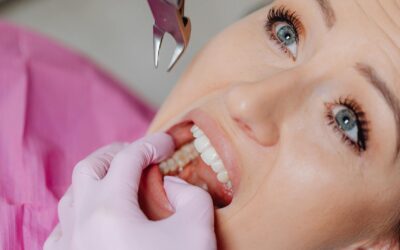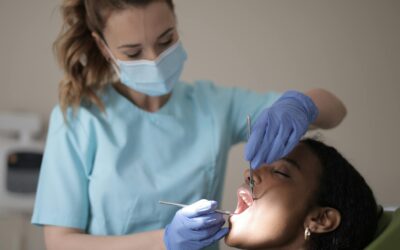When a tooth is extracted, your body immediately begins a complex yet natural recovery process. Understanding the healing timeline of a normal socket after tooth extraction is crucial to avoid unnecessary anxiety and to recognize what’s normal—and what’s not. Whether you’re on day 2, day 3, or day 7 post-extraction, knowing the signs of normal healing vs. complications like dry socket can make a big difference in your recovery journey.
In this guide, we’ll break down the day-by-day healing timeline, explain the wound and tissue healing process, and offer insights into clot formation, symptoms to watch, and care tips to ensure a smooth recovery.
- What Happens in a Normal Socket After Tooth Extraction?
- Healing Timeline of a Normal Socket After Tooth Extraction
- Wound Healing Process in a Normal Socket
- Tissue Healing in Normal Socket After Tooth Extraction
- Dry Socket vs. Normal Healing: Know the Difference
- Tips for Promoting Proper Healing
- Summary Timeline for Socket Healing
- FAQs
- Final Thoughts
🦷 What Happens in a Normal Socket After Tooth Extraction?
After a tooth is removed, the socket—the hole left in the bone—starts to heal in stages. Blood clots form almost immediately, serving as a natural bandage and initiating the healing process.
Note: The blood clot is critical. Losing it prematurely can lead to dry socket, a painful condition that delays healing.
📅 Healing Timeline of a Normal Socket After Tooth Extraction
Day 1–2: Initial Blood Clot and Inflammation
- Blood clot formation is the first and most crucial step.
- Swelling and slight bleeding are normal.
- Pain is manageable with prescribed or OTC medications.
- The socket may look dark red and moist.
⚠️ Remember: If your socket appears white or feels extremely painful after day 2, consult your dentist—it could be a dry normal socket after tooth extraction.
Day 3 Healing – Normal Socket After Tooth Extraction
By day 3, the clot should be intact, and the socket begins granulation tissue formation—a key sign of healing.
- Mild discomfort or tightness is common.
- The site may still be sensitive but should not worsen.
- Tissue healing in the socket begins to accelerate.
✅ Normal Signs on Day 3:
- Slight swelling and reduced pain
- No foul odor or bad taste
- Presence of healthy clot
Day 4–6: Progressive Healing and Tissue Regeneration
- The wound healing process continues with the formation of new connective tissue and capillaries.
- You’ll likely feel significantly better during these days.
- You may resume gentle brushing near the extraction area.
Day 7 Healing – Normal Socket After Tooth Extraction
One week in, most patients see noticeable improvement.
- The socket begins to shrink.
- Pain and swelling should be minimal or gone.
- The clot is replaced gradually by new tissue.
📝 Note: Some minor tenderness may still be present, but no throbbing pain or exposed bone should exist by now.
🧬 Wound Healing Process in a Normal Socket
The wound healing process involves multiple biological phases:
- Hemostasis – Blood clot forms immediately to prevent bleeding.
- Inflammation – White blood cells clean the area.
- Proliferation – New tissue and blood vessels form.
- Remodeling – Bone and gum gradually return to normal.
This process can take 4–6 weeks for soft tissue and several months for full bone healing.
Worth Reading: Signs of a Normal Socket After Tooth Extraction
🧪 Tissue Healing in Normal Socket After Tooth Extraction
Tissue healing is usually complete within 3–4 weeks in a normal case:
- Gum tissue often covers the socket within 10–14 days.
- Bone regeneration underneath may take 3–6 months.
- The socket area flattens and matches the surrounding gum line with time.
⚠️ Dry Socket vs. Normal Healing: Know the Difference
While discomfort is normal, intense pain several days after extraction may point to dry socket—a condition where the clot dislodges or dissolves too early.
🔍 Signs of Dry Normal Socket After Tooth Extraction:
- Severe, radiating pain
- Bad breath or unpleasant taste
- Exposed bone or empty-looking socket
- Pain worsening after initial relief
💡 Tips for Promoting Proper Healing
To support the natural healing process, follow these care tips:
- Avoid smoking and alcohol, which impair clotting.
- Do not use straws for at least 3–5 days.
- Eat soft foods like yogurt, soup, and mashed potatoes.
- Rinse with warm salt water after 24 hours (as advised).
- Avoid vigorous brushing near the socket.
🗓️ Summary Timeline for Socket Healing
| Day | What to Expect |
|---|---|
| Day 1–2 | Clot forms, mild pain/swelling |
| Day 3 | Beginning of granulation tissue, reduced pain |
| Day 4–6 | Tissue growth and early gum closure |
| Day 7 | Socket starts shrinking, minimal discomfort |
| Week 2+ | Gum nearly healed, bone healing underway |
FAQs
How do I know if my tooth extraction socket is healing properly?
This is one of the most commonly searched questions. People often worry whether their healing is on track or if something’s wrong.
What should a healing tooth socket look like on day 3?
This directly matches your secondary keyword: “day 3 healing normal socket after tooth extraction” and has a high search volume due to daily recovery tracking.
When does the blood clot form and how long does it last after a tooth extraction?
Addresses concerns related to clot formation and risk of dry socket. Also targets your keyword: “clot normal socket after tooth extraction.”
What are the signs of dry socket vs. normal healing?
This FAQ is crucial because patients often confuse pain or delayed healing with dry socket, which is a major concern.
How long does it take for the gum and bone to fully heal after a tooth extraction?
A broad and highly searched question that naturally targets “tissue healing normal socket after tooth extraction” and “wound healing process.”
Final Thoughts
A normal socket after tooth extraction heals in a predictable and relatively painless way if the blood clot is preserved. Paying attention to the day-by-day healing progress, caring for the site, and knowing signs of complications like dry socket can ensure a successful recovery.
🧠 Remember: Every person heals differently. Factors like age, oral hygiene, and underlying health conditions play a significant role.
For best outcomes, follow your dentist’s instructions and don’t hesitate to seek help if something feels off.
Disclaimer: The content provided in this article is for educational and informational purposes only. It does not substitute professional medical advice, diagnosis, or treatment. For guidance specific to your dental condition or recovery, please consult your dentist, oral surgeon, or licensed healthcare provider.










0 Comments